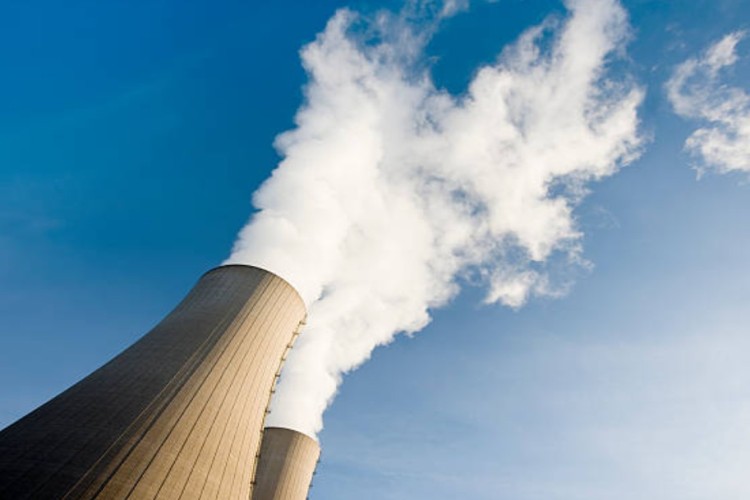
As the global search for clean and reliable energy sources intensifies, nuclear power is quietly reclaiming its place in the energy mix. For India, which remains heavily reliant on coal, nuclear energy offers a promising route to achieve its net-zero commitments while ensuring base-load power security. But the path ahead is fraught with institutional, financial, and legislative hurdles.
India’s largest power producer, NTPC, long associated with coal-fired electricity, is making a strategic pivot. The company has initiated talks with global suppliers from the US, South Korea, France, and Russia for a new mega nuclear project. It has also approached the World Bank, which last month reopened its financing window for nuclear projects after a decades-long hiatus. This development is potentially transformative, allowing public sector giants like NTPC access to lower-cost international capital—something Indian banks cannot offer at the same scale or tenure.
READ | The grey-to-green shift urban India urgently needs
NTPC has already secured environmental and forest clearances for its upcoming nuclear plant in Rajasthan. Once commissioned, the plant is expected to add 15 gigawatts (GW) to India’s nuclear capacity—more than double the current installed base of 8.8 GW. Importantly, the project includes provisions for technology transfer, laying the groundwork for wider replication across states.
A bold target, a steep climb
India’s nuclear energy ambition is unambiguously bold: ramping up capacity to 100 GW by 2047. That would be a tenfold increase in just over two decades. The motivation is clear. With energy demand expected to triple by 2040, and solar and wind subject to intermittency, nuclear power offers a stable, low-carbon alternative. Currently, nuclear accounts for only about 3% of India’s electricity generation.
The government’s clean energy roadmap has historically leaned heavily on solar and wind. Nuclear has lagged due to its steep capital costs—six to seven times higher than solar—and long gestation periods that can extend up to a decade. Add to this the complex regulatory and safety environment, and it is easy to see why India’s nuclear expansion has proceeded in fits and starts.
World Bank re-entry changes the equation
The recent decision by the World Bank Group, in partnership with the International Atomic Energy Agency, to resume financing nuclear power projects in developing countries marks a pivotal shift. World Bank President Ajay Banga called nuclear energy a necessary solution for countries trying to build modern, low-emission economies. For India, this opens the door to long-term, concessional financing not just from the Bank itself, but also from peer institutions like the Asian Development Bank.
Private and public sector entities in India, including NTPC and the Nuclear Power Corporation of India Ltd (NPCIL), now have an opportunity to access global capital on favourable terms—something that could unlock dozens of stalled or delayed nuclear proposals.
Policy rethink on private role
Perhaps the most significant change underway is the government’s quiet move to open up nuclear power generation to private Indian players. Though not formally announced, discussions are advancing on allowing private companies to enter what has so far been a tightly controlled sector. A limited window for foreign equity participation—up to a minority stake—is also reportedly on the table.
If approved, this would mark the most radical shift in India’s nuclear policy since the Indo-US civil nuclear agreement of 2008. At a time when advanced nuclear technologies—such as small modular reactors—are evolving rapidly, private sector involvement could accelerate innovation, reduce costs, and improve project delivery.
The liability logjam
Yet, the path to reform is anything but smooth. The single biggest stumbling block remains India’s Civil Liability for Nuclear Damage Act, 2010. Unlike in most countries, where the operator bears liability for accidents, Indian law places some responsibility on equipment suppliers—making foreign firms wary. The memory of the Bhopal gas disaster looms large in policy circles, and despite international pressure, successive governments have resisted amending the Act.
Major global firms like EDF (France), Westinghouse (USA), and GE have shown interest in India’s nuclear market but remain hesitant due to the unresolved liability issue. Promised amendments to bring Indian law closer to international norms have seen little progress.
A moment of opportunity
Even where financing and technology are available, local resistance to nuclear plants—citing safety and environmental concerns—continues to derail projects. Stalled ventures like the 9,900 MW Jaitapur project in Maharashtra and the 6,600 MW Kovvada project in Andhra Pradesh remain in limbo. Unless public engagement improves and environmental safeguards are strengthened, these multi-billion dollar investments could remain frozen.
The global environment for nuclear energy is shifting. Climate imperatives, energy security concerns, and the rising cost of fossil fuels are pushing many countries back toward atomic power. India, with its early experience in both uranium and thorium research, is well-placed to benefit—provided it moves decisively to resolve internal roadblocks.
With multilateral financing now on the table and institutional actors like NTPC willing to lead the charge, the moment is ripe. But unless India addresses the policy contradictions that have long hampered the sector—particularly around liability and private participation—the nuclear promise may once again remain unfulfilled.
